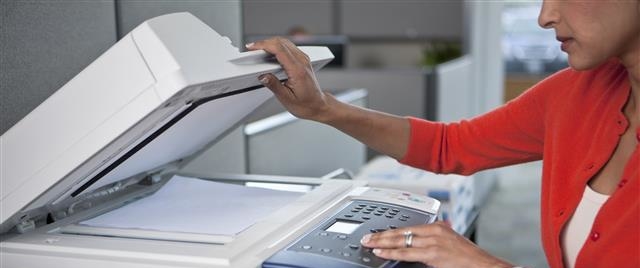This week I’m in New York City attending the National Retail Federation Annual Convention and EXPO show where Xerox is participating as exhibitor for the first time. Despite the fact shows like these often result in sore feet, a hoarse voice, too much food, and worse, a pair of running shoes and shorts that go unused despite best intentions, I really like attending. For me, getting to see all the latest industry tech and gadgetry is like combining the Discovery Channel and CNBC blended with a bit of state fair.
I’ve seen robot sales machines made to look like real people projected on silhouettes, a virtual dressing room that enables customers to try on clothes electronically via a large display, and digital signage solutions that help retailers present dynamic information in their stores. What I find interesting though, is most of these new solution innovations are simply the mash up of existing technologies that have been around for some time. For example, the digital signage systems are based on existing technologies like LCD displays, wireless and graphics that are common today in practically every home and business. A store can easily hang an LCD monitor on the wall and hook it up to a slide show on a computer. What’s more difficult is to put real dynamic and coordinated information in multiple in-store locations in multiple stores worldwide. To make digital signage work, a manufacturer in the retail industry had to glue all the existing elements together and add their secret ingredient – the ability to integrate and package the technology with a retailer’s systems.
 Now you may be asking, “Why is Xerox at the National Retail Federation show”? I thought you guys made office printers, copiers, and provided all that service stuff to keep them running? Well you are correct, we do all that stuff. But it turns out that businesses like your local chain of plumbing stores to the big box retailer you typically frequent print a lot on our color printers and multifunction printers. Every time a store changes their product mix, prices, or theme, they need to print new shelf tags, displays, and other assorted signs. For a small retailer with only a few stores printing signs is pretty easy. For retailers with a 1,000 stores and thousands of items on the shelf that often vary between regions (People don’t purchase snow shovels in Phoenix, but they are quite popular in Denver) and weekly sales, this becomes a challenge.
Now you may be asking, “Why is Xerox at the National Retail Federation show”? I thought you guys made office printers, copiers, and provided all that service stuff to keep them running? Well you are correct, we do all that stuff. But it turns out that businesses like your local chain of plumbing stores to the big box retailer you typically frequent print a lot on our color printers and multifunction printers. Every time a store changes their product mix, prices, or theme, they need to print new shelf tags, displays, and other assorted signs. For a small retailer with only a few stores printing signs is pretty easy. For retailers with a 1,000 stores and thousands of items on the shelf that often vary between regions (People don’t purchase snow shovels in Phoenix, but they are quite popular in Denver) and weekly sales, this becomes a challenge.
And this is why we partnered with AccessVia, a company that makes software to merge a store’s complex database of pricing and promotion information with signage artwork to create on demand signs that can be printed in store with the correct price, artwork, and quantity. With this new partnership, we are able to provide customers with an end-to-end solution that combines everything a retailer would need in a one stop solution.
Ok, while this solution may not be as wiz bang as digital signage, it does have something in common. The best solutions that solve real business problems typically have little to do with the using the latest technology. It’s simply a matter of choosing existing bits of technology, a strong understanding of your customer’s problem, and the right partners to create that perfect mash-up. Do you have a question on how to print and manage your signage? Ask it here.


